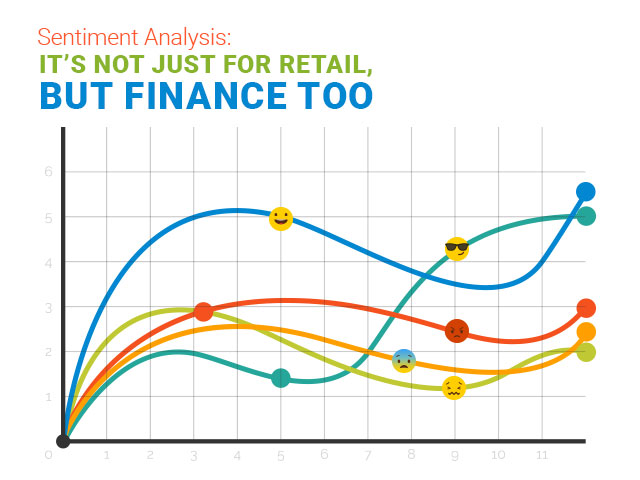
Sentiment Analysis: It’s Not Just for Retail, but Finance Too
It’s a term you are hearing more frequently. Why? Well, sentiment analysis is an increasingly popular tool that people are using. It boosts business, provides a better understanding, and lets you really get to know your customer base. It’s one of the best tools out there, and once businesses start using it, they wonder how they managed to survive before it. Whether you know what sentiment analysis is or not, this guide has everything you need and more to help you see the light. Welcome to sentiment analysis: the good, the bad, and the ugly.
What and Why?
Let’s get into the details of what sentiment analysis is and why you might want to use it. It is actually an algorithm that is used to scan the entire web (although it is often associated with social media) to find mentions of you and your business. The results it brings back to you will be organised according to their emotional tone, and will usually be displayed in the form of a polarity: positive, negative, and neutral. There are some that pinpoint the exact emotion, but polarity is the most common form.
Bank of America sentiment analysis results.
When you are sifting through the results, a majority of tools, such as Brand24, will allow you to filter them. This is often done by polarity, but there are some that will allow you to filter according to other aspects as well, for example, gender, for more diverse results. It all depends on the tool you decide to go with. Also, there are different types of sentiment analysis, as follows:
– Rules-based: This is where the algorithm is created and maintained by hand. It offers a lot of freedom but takes a great deal of time and effort to maintain and update.
– Automatic: This form uses machine learning, and the algorithm is able to teach and update itself. It is easier to manage but also lacks the customisation of the rules-based system.
– Hybrid: This combines both of the above methods and is actually the most popular one. It has the best of both worlds, and can be used for quick and easy-to-manage crawling as well as for a system that can be customised.
Why should you use sentiment analysis, though? In short, because you want your business to grow. How will you achieve that? Well, the next section is going to take you through all of the positives that come with sentiment analysis.
How it Boosts Business: The Good
Sentiment analysis is actually one of the best ways to boost your business, and there are quite a few reasons why. Even the financial industry can receive a great boost from sentiment analysis. You can even learn from others that are doing well in the finance sector. This section will take you through what this algorithm can do for you:
– Crisis prevention: If a customer leaves a negative comment or review, and it is left alone, other customers will see that as negligent. Sentiment analysis gives you live notifications when someone says something negative so that you can address it professionally and nip the social media crises in the bud. It’s fast and effective.

An example of an outrageous tweet that could start a PR nightmare if handled poorly.

This tweet has been deleted from Twitter, but the sentiment analysis tools keep them on record.
– Understanding your customers: You learn more about who your target market is and what they want. This is so important because your customers are your lifeforce, and without them you are nothing. Take the time to read through their comments to find out what they love, hate, and feel indifferent towards. Sentiment results can tell you so much about the people you are engaging with and how to do it better.

Bank of America can see that negative mentions correlate perfectly over the past 30 days. This is a perfect example of a potential learning curve.
– Better marketing: Due to the fact you are learning more about your customers, you can tailor your marketing campaigns to suit them more. Catch their attention, engage with what they actually want from you, and relate to them in a way that only you know how. Learning all of this and implementing it is a major step to success.
– Using social media right: You will also learn how to use social media correctly because a lot of companies are doing it wrong. Sentiment analysis shows you which posts your customers like, and which they don’t. You can learn how to create posts that get more reactions (in a good way) and have people coming to your page to learn more. Grab their attention and never let go.

Blogs are not usually the most common place for negative mentions. A potential learning curve.
– Competition comparison: See what your competitors are doing and track their sentiment. Are customers reacting better or worse to them when compared to you? Learn from the mistakes they make as well as the things they do correctly. You can grow just by monitoring them and implementing new ideas and techniques. Maybe even nab a few of their customers?

Comparison of Mastercard and Bank of America over the past 12 months.

Split media attention for Bank of America
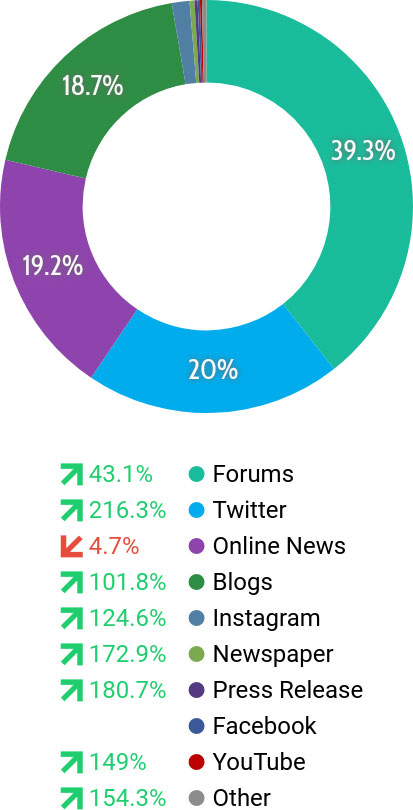
Media attention is also split for Mastercard, but in a different way.
Finding Influencers; and Why
Influencers really are the next big thing for businesses and, technically, they are already heading for the top marketing spot. You need them because they can bring more customers to your website. Sentiment analysis can actually help you find influencers using filters so that you can get in touch with them and build a partnership. All you need to do is give them a free or discounted product to review in order to get started.
Even in the financial industry, it is important to have people who speak highly of your products and services. Customers are more likely to look to an influencer before they make a decision because they are real people who are trying a product or service out. In fact, analysts have stated that credibility, authenticity, and relevance are the determining factors with regards to whether or not the relationship between an influencer and bank will work. Be genuine, and the results shall be too.

Eric “Travel Babbo” Stoen has worked with multiple brands. Sometimes his family travel blogs get repurposed by sponsoring companies, such as Capital One.
Don’t go purely by reach when looking for an influencer, though. My recommendation? Look at those who have the highest level of engagement per Tweet, Instagram post, or Facebook update. It all depends on the platform you are using.

Mastercard: Engagement/Mention
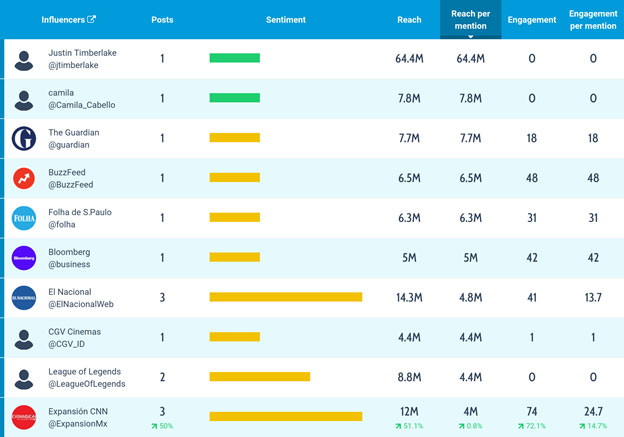
Reach/Mention; Twitter
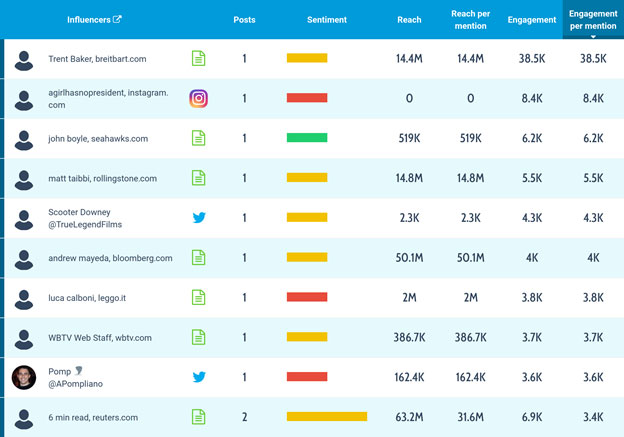
Bank of America: Engagement/Mention
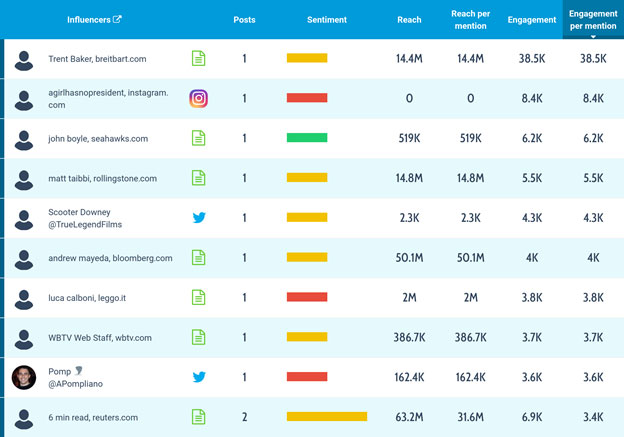
Reach/Mention; Twitter
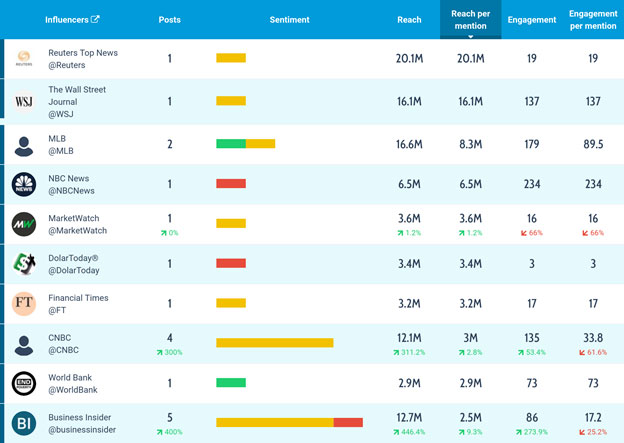
Engagement/Mention; Multiple Businesses
The Bad and the Ugly
It’s not a perfect system, though, and it does have its flaws. Despite being right between 70 and 80% of the time, there are areas that it struggles in. For the final section, here are a few of the downsides that come with sentiment analysis:
– Sarcasm and irony: Even humans have trouble with this, so you can’t expect a machine to be much different. It can have a lot of trouble with sarcasm and irony; placing them in the wrong sentiment as a result. For situations like this, it is best to scroll through the results manually to find them.
– Context: It can have a really hard time with this, and context on the internet as a whole can be a tricky thing to decipher. So, it is no surprise that sentiment analysis may struggle with the concept of context. You may find some of the results have been taken out of context when sorted into their polarity.
– Emojis: Pictures are an emotion that the algorithms often find hard to read. However, you can actually update sentiment analysis tools so that they can read western and eastern emojis near perfectly. This can be handy, considering more and more people are using them as a form of expression.
– Comparisons: Whether it is a comparison between two of your products, or with a competitor, sentiment analysis can find it hard to place these messages. They may end up in the wrong polarity when you are searching through results.
To Conclude
I hope that you found this piece interesting and informative and that it has helped you see why sentiment analysis is such a beneficial tool to have. The algorithm works seamlessly with the web to create a pretty accurate picture of what people think of your website. Is there room for error? Of course. Is it a large gap? Definitely not. Sentiment analysis is the business guru you never knew you needed, and with it comes a deep and shocking look into the world of your customer base.
Learn more about Milosz Krasiński at https://miloszkrasinski.com/

what do you think?